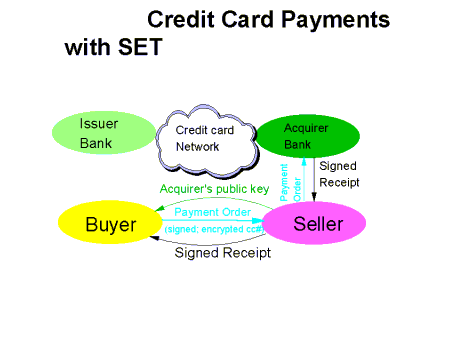In 1974, a study group under the chairmanship of Mr. P. L. Tandon was constituted for framing guidelines for commercial banks for follow-up & supervision of bank credit for ensuring proper end-use of funds. The group submitted its report in August 1975, which came to be popularly known as Tandon Committee Report on Working Capital. Its main recommendations related to norms for inventory and receivables, the approach to lending, style of credit, follow ups & information system. It was a landmark in the history of bank lending in India. With acceptance of major recommendations by Reserve Bank of India, a new era of lending began in India. Tandon committee’s recommendations Breaking away from traditional methods of security oriented lending, the committee enjoyed upon the banks to move towards need based lending. The committee pointed out that the best security of bank loan is a well functioning business enterprise, not the Continue reading
Business Finance
Business Finance is that business activity which is concerned with the acquisition and conservation of capital funds in meeting financial needs and overall objectives of business enterprises.
Secure Electronic Transaction (SET)
Secure Electronic Transaction (SET) is a standard protocol for securing credit card transactions over insecure networks, specifically, the Internet. SET is not itself a payment system, but rather a set of security protocols and formats that enables users to employ the existing credit card payment infrastructure on an open network in a secure fashion. Secure Electronic Transaction (SET) was developed by VISA and MasterCard (involving other companies such as GTE, IBM, Microsoft, Netscape, RSA and VeriSign) starting in 1996. SET is based on X.509 certificates with several extensions. SET uses a blinding algorithm that, in effect, lets merchants substitute a certificate for a user’s credit-card number. This allows traders to credit funds from clients’ credit cards without the need of the credit card numbers. SET makes use of cryptographic techniques such as digital certificates and public key cryptography to allow parties to identify themselves to each other and exchange information Continue reading
What is Profit Center?
When financial performance of a responsibility center is measured in terms of the organization’s profit, then it is called a profit center. In a profit center, performance is measured in terms of the numerical difference between revenues (outputs) and expenditure (inputs). A profit center is given the responsibility of earning profits. It is involved in the manufacture and sale of outputs, and it measures how well the center is doing economically. The profit center also determines the efficiency of the manager in charge of the center. Profit as a measure of performance is especially useful since it enables senior management to use one comprehensive measure instead of several measures that often point to different directions. A profit center helps in motivating managers to perform well in areas they control and also encourages managers to take initiatives. The profit center helps the organization to make the best use of specialized market Continue reading
Installment Purchase System – Meaning and Concept
An installment purchase system is just like a credit purchase and hire purchase system of selling and buying goods. Like hire purchase, in installment purchase system an agreement is made between buyer and seller to purchase and sell of goods. The buyer makes certain down payment at the time of signing agreement and the balance is paying in installment over a period of time. An installment purchase system is a credit sale in which payments are made in installments over a period of time. In this system, the buyer gets the possession as well as ownership of the goods right at the time of signing the agreement. During the course of paying the installment, if the buyer makes default in paying the installment, the vendor cannot responses the goods. In that case, the vendor can sue the buyer for recovery of dues. Like in hire purchase even the paid installments Continue reading
Introduction to Merchant Banking
Definition of Merchant Banking The Notification of the Ministry of Finance defines merchant banker as; “Any person who is engaged in the business of issue management either by making arrangements regarding selling, buying or subscribing to securities as manager-consultant, adviser or rendering corporate advisory services in relation to such issue management” The Amendment Regulation specifies that issue management consist of prospectus and other information relating to issue, determining financial structure, tie-up of financiers and final allotment and refund of the subscriptions, underwriting and portfolio management services. In the words of Skully “A Merchant Bank could be best defined as a financial institution conducting money market activities and lending, underwriting and financial advice, and investment services whose organization is characterized by a high proportion of professional staff able to able to approach problems in an innovative manner and to make and implement decisions rapidly.” Nature of Merchant Banking Merchant banking is Continue reading
Current Cost Accounting – Definition and Criticisms
Current Cost Accounting (CCA) attempts to provide more realistic book values by valuing assets at current market buying prices. It takes into account time-value of money and inflation. It is more complex than the traditional accounting, and it has created controversy about what adjustments are appropriate. Unlike Historical Cost Accounting, there is no need for inventory cost flow assumptions such as last-in-first-out and weighted average. The business profit in CCA shows how the entity has gained in financial terms the increase in cost of its resources, which is ignored by historical cost accounting. Differentiating operating profit from holding gains and losses has claimed to enhance the usefulness of information being provided by CCA. Holding gains are different from trading income as they are due to market-wide movements which are beyond the control of the management. Therefore, Current Cost Accounting doesn’t rewards managers for profits from holding gains and losses which Continue reading
